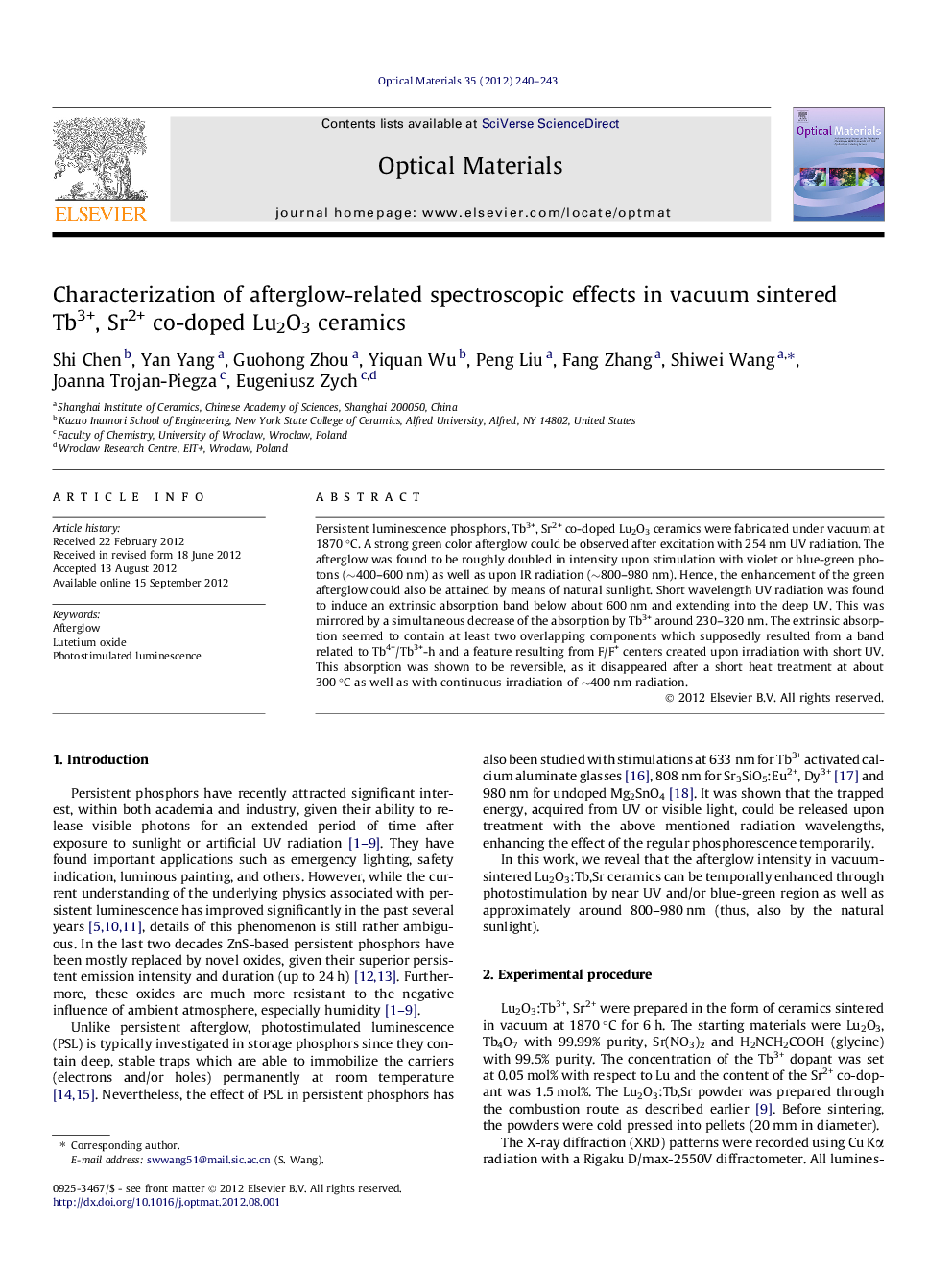| Article ID | Journal | Published Year | Pages | File Type |
|---|---|---|---|---|
| 1495089 | Optical Materials | 2012 | 4 Pages |
Persistent luminescence phosphors, Tb3+, Sr2+ co-doped Lu2O3 ceramics were fabricated under vacuum at 1870 °C. A strong green color afterglow could be observed after excitation with 254 nm UV radiation. The afterglow was found to be roughly doubled in intensity upon stimulation with violet or blue-green photons (∼400–600 nm) as well as upon IR radiation (∼800–980 nm). Hence, the enhancement of the green afterglow could also be attained by means of natural sunlight. Short wavelength UV radiation was found to induce an extrinsic absorption band below about 600 nm and extending into the deep UV. This was mirrored by a simultaneous decrease of the absorption by Tb3+ around 230–320 nm. The extrinsic absorption seemed to contain at least two overlapping components which supposedly resulted from a band related to Tb4+/Tb3+-h and a feature resulting from F/F+ centers created upon irradiation with short UV. This absorption was shown to be reversible, as it disappeared after a short heat treatment at about 300 °C as well as with continuous irradiation of ∼400 nm radiation.
► Lu2O3 was sintered in vacuum, unlike previous atmosphere, at higher temperature. ► Post stimulation with visible and NIR lights for the afterglow was newly studied. ► Short UV radiation was found to induce an extrinsic structured absorption. ► The absorption could disappear upon further light or heat treatment.
